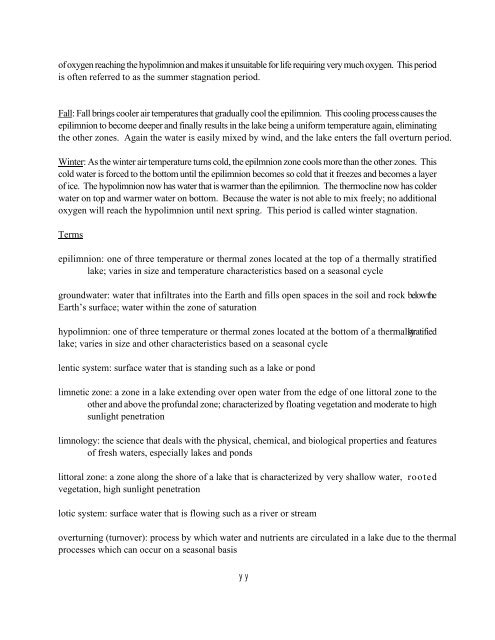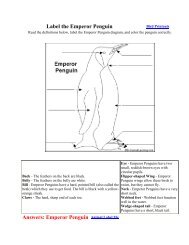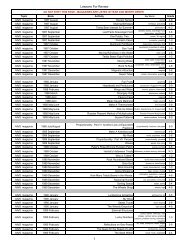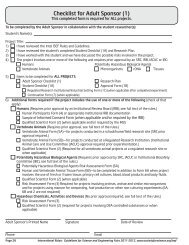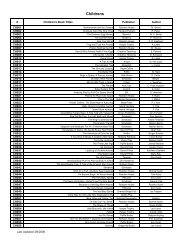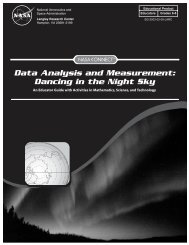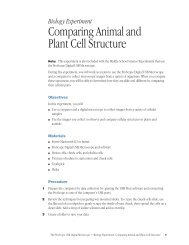BIOGRAPHY OF A RIVER
BIOGRAPHY OF A RIVER
BIOGRAPHY OF A RIVER
Create successful ePaper yourself
Turn your PDF publications into a flip-book with our unique Google optimized e-Paper software.
of oxygen reaching the hypolimnion and makes it unsuitable for life requiring very much oxygen. This periodis often referred to as the summer stagnation period.Fall: Fall brings cooler air temperatures that gradually cool the epilimnion. This cooling process causes theepilimnion to become deeper and finally results in the lake being a uniform temperature again, eliminatingthe other zones. Again the water is easily mixed by wind, and the lake enters the fall overturn period.Winter: As the winter air temperature turns cold, the epilmnion zone cools more than the other zones. Thiscold water is forced to the bottom until the epilimnion becomes so cold that it freezes and becomes a layerof ice. The hypolimnion now has water that is warmer than the epilimnion. The thermocline now has colderwater on top and warmer water on bottom. Because the water is not able to mix freely; no additionaloxygen will reach the hypolimnion until next spring. This period is called winter stagnation.Termsepilimnion: one of three temperature or thermal zones located at the top of a thermally stratifiedlake; varies in size and temperature characteristics based on a seasonal cyclegroundwater: water that infiltrates into the Earth and fills open spaces in the soil and rock below theEarth’s surface; water within the zone of saturationhypolimnion: one of three temperature or thermal zones located at the bottom of a thermally stratifiedlake; varies in size and other characteristics based on a seasonal cyclelentic system: surface water that is standing such as a lake or pondlimnetic zone: a zone in a lake extending over open water from the edge of one littoral zone to theother and above the profundal zone; characterized by floating vegetation and moderate to highsunlight penetrationlimnology: the science that deals with the physical, chemical, and biological properties and featuresof fresh waters, especially lakes and pondslittoral zone: a zone along the shore of a lake that is characterized by very shallow water, rootedvegetation, high sunlight penetrationlotic system: surface water that is flowing such as a river or streamoverturning (turnover): process by which water and nutrients are circulated in a lake due to the thermalprocesses which can occur on a seasonal basisy y


